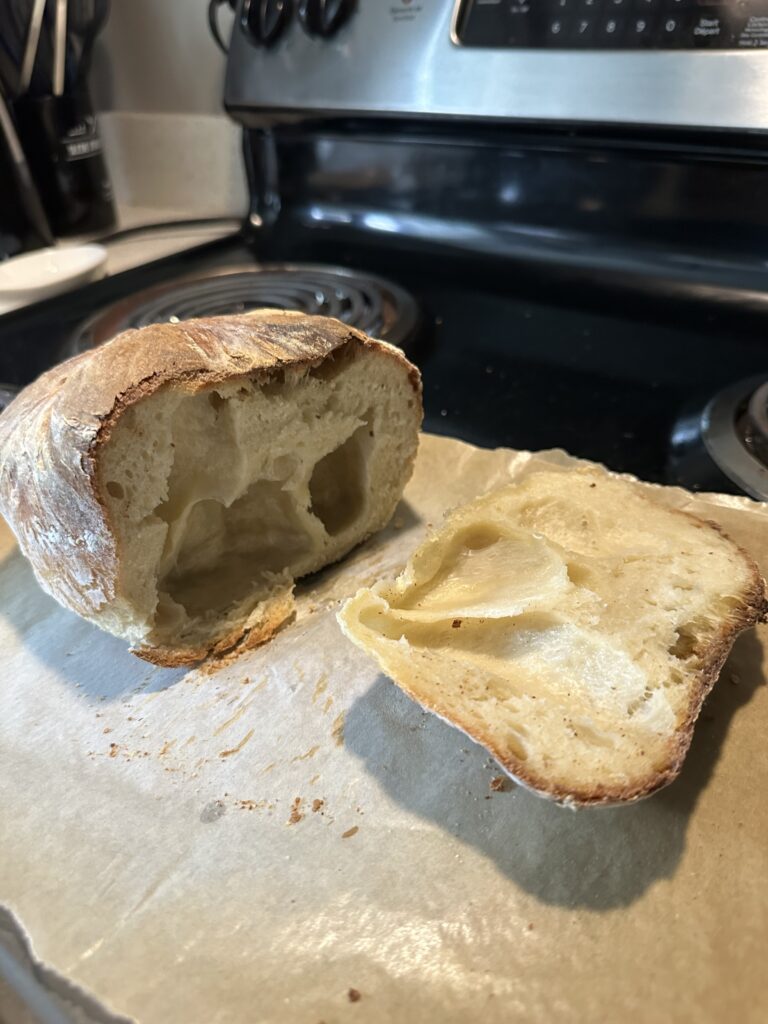
Above is a photo of my original starter’s loaf. Notice the large air pockets.
In the past two weeks, I tried making a loaf with each of my starters. I hoped for both of them to pass the float test, rise during the dough process, and form properly while cooking in the oven. However, I was not feeding my starters throughout the break and refrigerated them too long, causing my second starter to lose a lot of the progress that it had made.
Because of this, it did not pass the float test after 24 hours on the counter with two feeds. I tried making a loaf with it anyway and it did not go well. Firstly, the dough was not rising or heating up after resting and it had no stretch when I did the pull and fold rotations. After letting the dough sit overnight, it only rose in the slightest but the starter seemed to be coming back to life and the dough smelled usual, so I cooked the bread anyway. It cooked similarly to my first loaf when it failed to rise and produced an incredibly thick, heavy, and doughy loaf of bread.
Fortunately, the bread that I made during the week before reading week using the original starter turned out quite well. It is photographed at the top of this blog post. It has large air pockets and smelled amazing while cutting into pieces than any of my prior loaves. One issue I am having is that the air bubbles are too big. This could be from preparing the dough incorrectly or from letting it rise for too long.
As I continue to progress through my sourdough-making journey, I continue to learn new things with each loaf and each setback that I approach. I have learned so much already and will learn from adjusting the dough each time, hopefully, to eventually perfect my sourdough loaves.